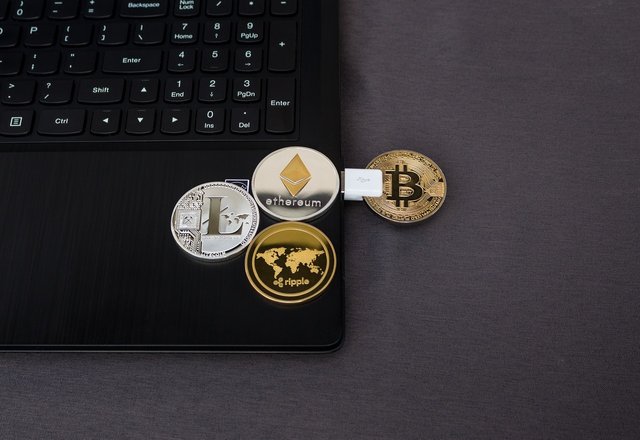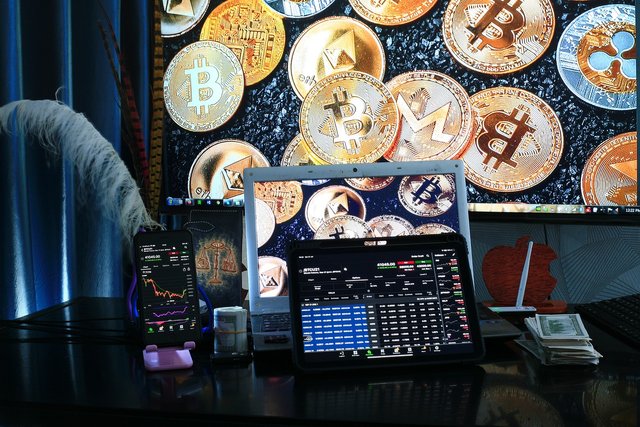Crypto Expert (Beginner to Pro) #2 - Wallets in Cryptocurrency
Introduction |
|---|
Saving your conventional currencies requires putting them in a safe place like leather wallets for physical currencies at hand and others in bank accounts, save for the rainy day or in investments. Likewise, a cryptocurrency which is a virtual currency requires its storage in what is known as wallets.

Canva Edit
Owning and storing crypto assets are technically impossible without wallets. The wallet is an important concept in cryptocurrency we would look into today, expanding the teaching into the two types based on the host authority, centralized and decentralized wallets.
Wallets in Cryptocurrency |
|---|
A wallet in its literal meaning translates to an object with spaces inside it that is utilized for the storage of money and other valuables (like passports, other documents and so on).
In cryptocurrency, a wallet is a virtual space that is specifically designed for storing crypto assets and serving the same purpose as the conventional bank accounts that are used to save money, but under a different regulatory body.
It is important to own a wallet of any kind before you can buy/sell or store your crypto assets, just as your harvests from the farm need a warehouse for better utility later. Wallets in the cryptocurrency can be classified into two categories:
Hot wallets [connected to the Internet at all times while mobile devices and PCs (computers generally) serve as the host].
Cold wallets (in the form of USB as the host and user can only choose to connect this type to the Internet when they want to access their assets via computers or other compatible mobile devices).

Cold Wallet Representation | Pixabay
The blockchain network plays an important role in the storage of assets on any particular wallet depending on its compatibility. This takes us back to how we explored transaction validations on the blockchain last week - Crypto Expert (Beginner to Pro) #1 - Transaction Validation on a Blockchain Network.
For example, the Steemit wallet is a crypto wallet that can only be used to store assets built on top of the STEEM blockchain and can't be used to store assets like ETH. That's where compatibility comes in as we have discussed in the previous lesson.
Centralized and Decentralized Crypto Wallets |
|---|
Centralized and decentralized wallets are the two main types of crypto wallets based on the host or body. Centralized wallets otherwise known as exchange wallets are the types of wallets created for a user upon an account creation with a centralized crypto exchange.
Crypto exchanges are bodies that enable the buying and selling of crypto assets, as highlighted earlier, to trade a crypto asset requires a wallet, as such the exchange wallets are utilized for storing assets and can be accessed whenever needed.

Crypto Trading Representation | Pixabay
Some of the attributes of exchange wallets are:
- The main authority of the assets is owned by the centralized exchange.
- Every transaction on a centralized wallet is routed via the exchange authority to permit a successful interaction or denial.
- Users have no access to the wallet's private keys as they can only secure the wallet with passwords or other 2FAs.
- Users are exposed to a wide range of tradable assets across several blockchains (high liquidity).
- Availability of live support in case there is an error or mistake.
Decentralized wallet is the other category where users own the total ownership of the asset in his/her wallet at any point in time. Assets in decentralized wallets are secured by private keys or seed phrases which only the owner holds as such giving an extra layer of security.
In cases when a user embarks on a trip and leaves the device hosting the wallet back home, he/she can still easily access the assets on other devices with no limitations at all, if the private key can be found. Some of the attributes of decentralized wallets are:
- They are considered the safest type of wallet.
- Users are in total control of their assets.
- There are no limitations to access even across borders.
- In terms of storage, they are sometimes limited to a blockchain network.
- Trading can be a bit tedious with this type of wallet (requires moving assets to exchange or connect to DEX which is sometimes limited in liquidity).
There are a lot of centralized exchanges that are available to users to own an account and utilize the wallets to store assets or trade, some of them are, Coinbase, Binance, ByBit, KuCoin, Crypto.com, OKX and so on. Likewise, there are a lot of decentralized wallets like, Steemit Wallet MetaMask, TrustWallet, Avocado Wallet, Atomic Wallet, TronLink and so on.
Conclusion |
|---|
In conclusion, the possession of crypto assets starts with owning an account with a centralized exchange or creating a decentralized wallet to be the host of those assets. The two types discussed in this context have their pros and cons as discussed under their attributes.
As users in this ecosystem, you should choose a wallet that suits your needs at a point in time and be extra careful with your interactions. Your passwords, 2FA Apps keys, private keys or seed phrases are not meant to be shared or revealed with others. Trust you had a great read and we will see in subsequent series.
Article shared on X
TEAM 1
Thanks for the support, @karianaporras.
Great breakdown of crypto wallets, Fredquantum I appreciate the clarity on hot/cold and centralized/decentralized differences, especially the emphasis on security and private keys. Essential reading for crypto enthusiasts at any level.